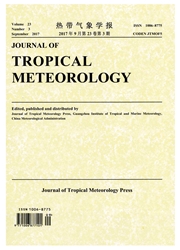

 中文摘要:
中文摘要:
Although the "predictability barrier" is a scientific problem brought forward during the middle 1990’s,it has yet to be clearly understood.In this paper,the authors used model results to study the "predictability barrier" of some atmospheric (climatic) systems,including the equatorial Pacific sea surface temperature (SST),East Asia trough (EAT),and South Asia wind field (monsoon).It is shown that the "predictability barrier" appeared not only in predicting the SST in the equatorial Pacific,but also in predicting the atmospheric circulation systems,such as the EAT and the monsoon.The "predictability barrier" for predicting the different climate systems appeared not only in spring,but also in different seasons.It appeared in spring for the equatorial Pacific SST,in summer for the EAT,and in fall and winter for the monsoon.Further analyses showed that the fundamental physical essence of the "predictability barrier" is the seasonal variability characteristics of the atmospheric (climate) system.The "predictability barrier" would occur when the system was at its weakest or worst continuous phase.Furthermore,the models and error patterns also had an important impact on the "predictability barrier";good models and special error patterns can minimize the "predictability barrier".
 同期刊论文项目
同期刊论文项目
 同项目期刊论文
同项目期刊论文
 The Variations of Dominant Convection Modes over Asia, Indian Ocean, and Western Pacific Ocean durin
The Variations of Dominant Convection Modes over Asia, Indian Ocean, and Western Pacific Ocean durin The Signicant Relationship between the Arctic Oscillation (AO) in December and the January Climate o
The Signicant Relationship between the Arctic Oscillation (AO) in December and the January Climate o 期刊信息
期刊信息
